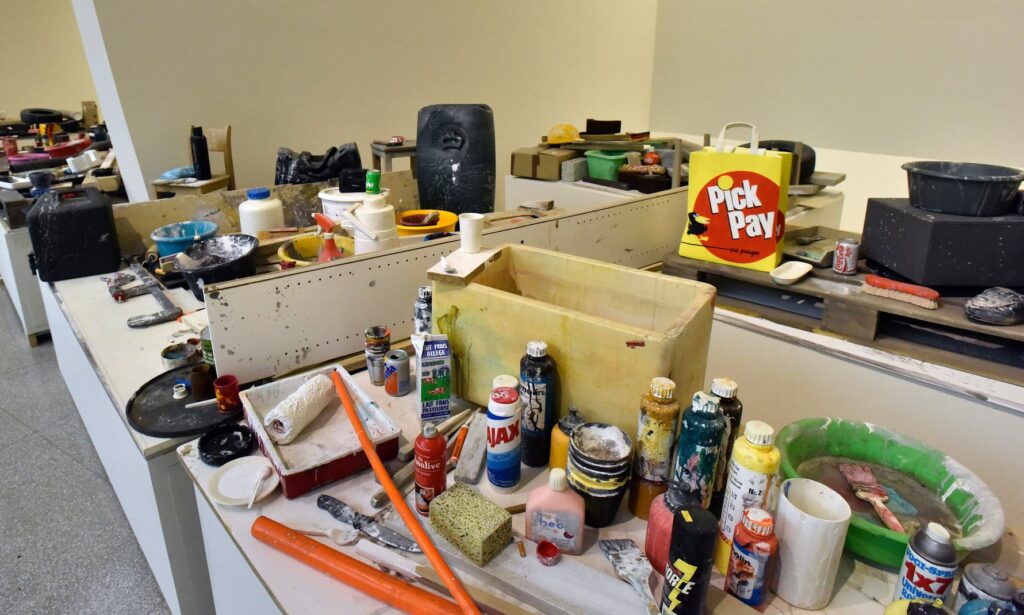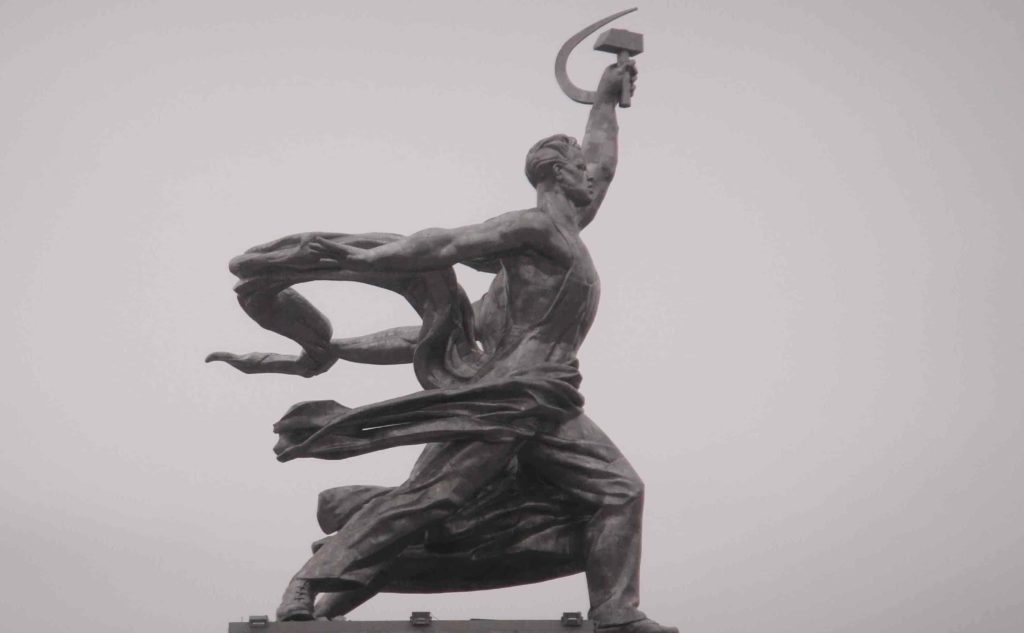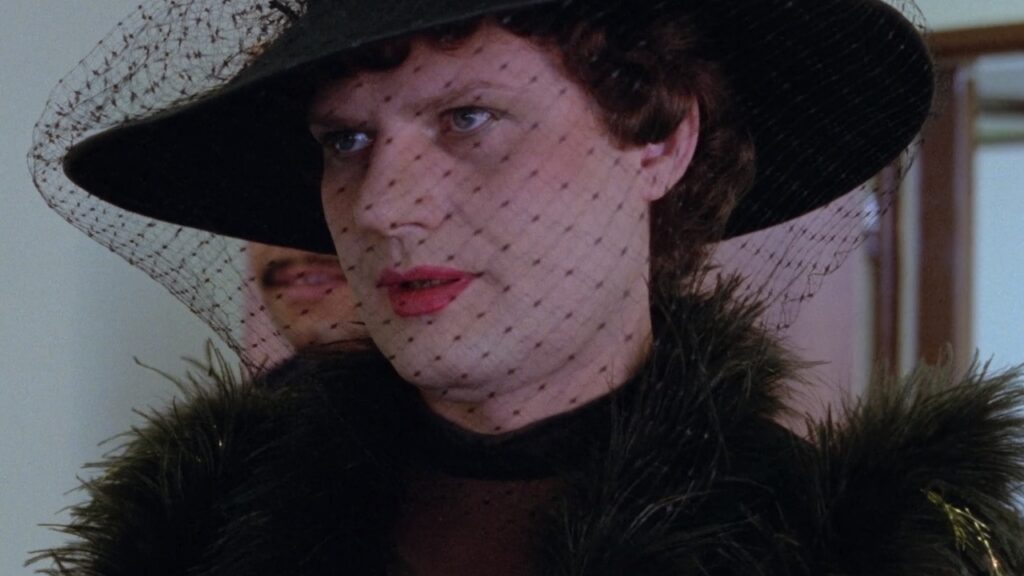Japan’s sea lions
Headlines from Japan concerning the world of work usually surprise us with technological innovations such as the recent testing of care robots. The special relationship of the Japanese to traditional professions, on the other hand, is often relegated to museum curiosities. Portuguese filmmaker Cláudia Varejão has created a cinematic monument in this sense with Ama-San (“sea women”) for the disappearing Japanese apnoea divers. The Korean counterpart to this is the Haenyo (“sea women”), who rightfully made it onto the UNESCO list of immaterial world cultural heritage. Women who have been diving together for generations for shellfish, crustaceans and shells to support their families.
From a Western point of view, this occupational group is quite exceptional. It consists almost exclusively of women who are engaged in an activity that for thousands of years in the rest of the world was reserved for men. These women have promoted female entrepreneurship, female employment and emancipation in an extremely patriarchal society, for example by organising themselves into trade unions. Female apnoea divers today have an average age of over 60 years, in a job that is generally classified as hard work. And astonishingly, until the advent of Western tourism in the 1950s, they were doing their job naked. Admittedly, before the invention of wetsuits, this characteristic had mainly practical reasons. Especially the latter aspect of this profession was of interest to many Western hobby ethnographers, which, by the way, was aesthetically excellently documented by the nude photographer Yoshiyuki Iwasewe (1904 — 2001). It may be assumed that it is precisely for this reason that early film recordings of this supposedly exotic and seemingly erotic profession exist.
The film by Varejão accompanies the everyday life of three — at least up to the neck in neoprene — divers of different generations in the style of ‘Direct Cinema’. Varejão herself appropriately calls her film “ethnofiction”.
References:
Luke, Anthony (2011). Photographer Iwase Yoshiyuki’s Ama Divers
Suzuki, Krys (2019). Ama-San: The Culture and History of Japan’s Female Free Divers
Cláudia Varejão, Ama-San, Portugal 2016, Trailer
Historical Movie, Ama-San, 3min
Ama-San in "La Donna Nel Mundo", 1963, 2min

Ama-San, Portugal 2016, Still
© Vinca-Film
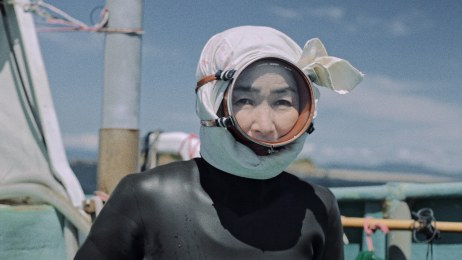
Ama-San, Portugal 2016, Still
© Vinca-Film
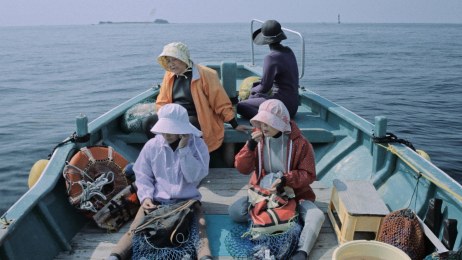
Ama-San, Portugal 2016, Still
© Vinca-Film
Japan’s sea lions
Headlines from Japan concerning the world of work usually surprise us with technological innovations such as the recent testing of care robots. The special relationship of the Japanese to traditional professions, on the other hand, is often relegated to museum curiosities. Portuguese filmmaker Cláudia Varejão has created a cinematic monument in this sense with Ama-San (“sea women”) for the disappearing Japanese apnoea divers. The Korean counterpart to this is the Haenyo (“sea women”), who rightfully made it onto the UNESCO list of immaterial world cultural heritage. Women who have been diving together for generations for shellfish, crustaceans and shells to support their families.
From a Western point of view, this occupational group is quite exceptional. It consists almost exclusively of women who are engaged in an activity that for thousands of years in the rest of the world was reserved for men. These women have promoted female entrepreneurship, female employment and emancipation in an extremely patriarchal society, for example by organising themselves into trade unions. Female apnoea divers today have an average age of over 60 years, in a job that is generally classified as hard work. And astonishingly, until the advent of Western tourism in the 1950s, they were doing their job naked. Admittedly, before the invention of wetsuits, this characteristic had mainly practical reasons. Especially the latter aspect of this profession was of interest to many Western hobby ethnographers, which, by the way, was aesthetically excellently documented by the nude photographer Yoshiyuki Iwasewe (1904 — 2001). It may be assumed that it is precisely for this reason that early film recordings of this supposedly exotic and seemingly erotic profession exist.
The film by Varejão accompanies the everyday life of three — at least up to the neck in neoprene — divers of different generations in the style of ‘Direct Cinema’. Varejão herself appropriately calls her film “ethnofiction”.
References:
Luke, Anthony (2011). Photographer Iwase Yoshiyuki’s Ama Divers
Suzuki, Krys (2019). Ama-San: The Culture and History of Japan’s Female Free Divers
Cláudia Varejão, Ama-San, Portugal 2016, Trailer
Historical Movie, Ama-San, 3min
Ama-San in "La Donna Nel Mundo", 1963, 2min

Ama-San, Portugal 2016, Still
© Vinca-Film

Ama-San, Portugal 2016, Still
© Vinca-Film

Ama-San, Portugal 2016, Still
© Vinca-Film

Fischli and Weiss as DIY
A young Youtuber has presumably unwittingly made a remake of Fischli and Weiss' famous art video "The Way Things Go" (1987), raising interesting questions about the relationship between art, professional craft and DIY.
Fitness to work?
Under the topos ‘health’, a comprehensive optimization and enhancement logic is implanted into people. Fitness is one of several influencing factors in establishing innovative, exceptional and performative entrepreneur of oneself.
Erwin and Elvira, the butcher
Fassbinder's outstanding melodrama "In a Year of 13 Moons" (1978) is a consistently topical contribution to today's identity politics debate and a forceful exclamation mark for anti-stereotypical professions.
The old fear of the end of new work itself
We all look forward to the end of the working day, but not the end of work itself. The fear of automation and the end of work is an old topos, as evidenced by industrial films from the 1950s.
Superpowers on the job
What to do with superhuman abilities on the job? Superheroes don't give much information on this. A troll in one of the most extraordinary Swedish films of recent years (Border, 2018), on the other hand does.
When pictures of economy went into motion
A new book introduces us to the important epistemologist Michael Polanyi as a didactician of economics and recalls his educational film "Unemployment and Money" (1940), which is still worth seeing today.

About this blog
By selecting a film or an image, this blog literally illustrates the vast sphere of work, employment & education in an open collection of academic, artistic and also anecdotal findings.
About us
Konrad Wakolbinger makes documentary films about work and life. Jörg Markowitsch does research on education and work. They are both based in Vienna. Information on guest authors can be found in their corresponding articles.
More about
Interested in more? Find recommendations on relevant festivals, film collections and literature here.
About this blog
With picking a film or an image, this blog literally illustrates the vast sphere of work, employment & education in an open collection of academic, artistic and also anecdotal findings.
About us
Konrad Wakolbinger makes documentary films about work and life. Jörg Markowitsch does research on education and work. We both work in Vienna. Information on guest authors can be found in their respective articles.
More about
Interested in more? Find recommendations on relevant festivals, film collections and literature here.


